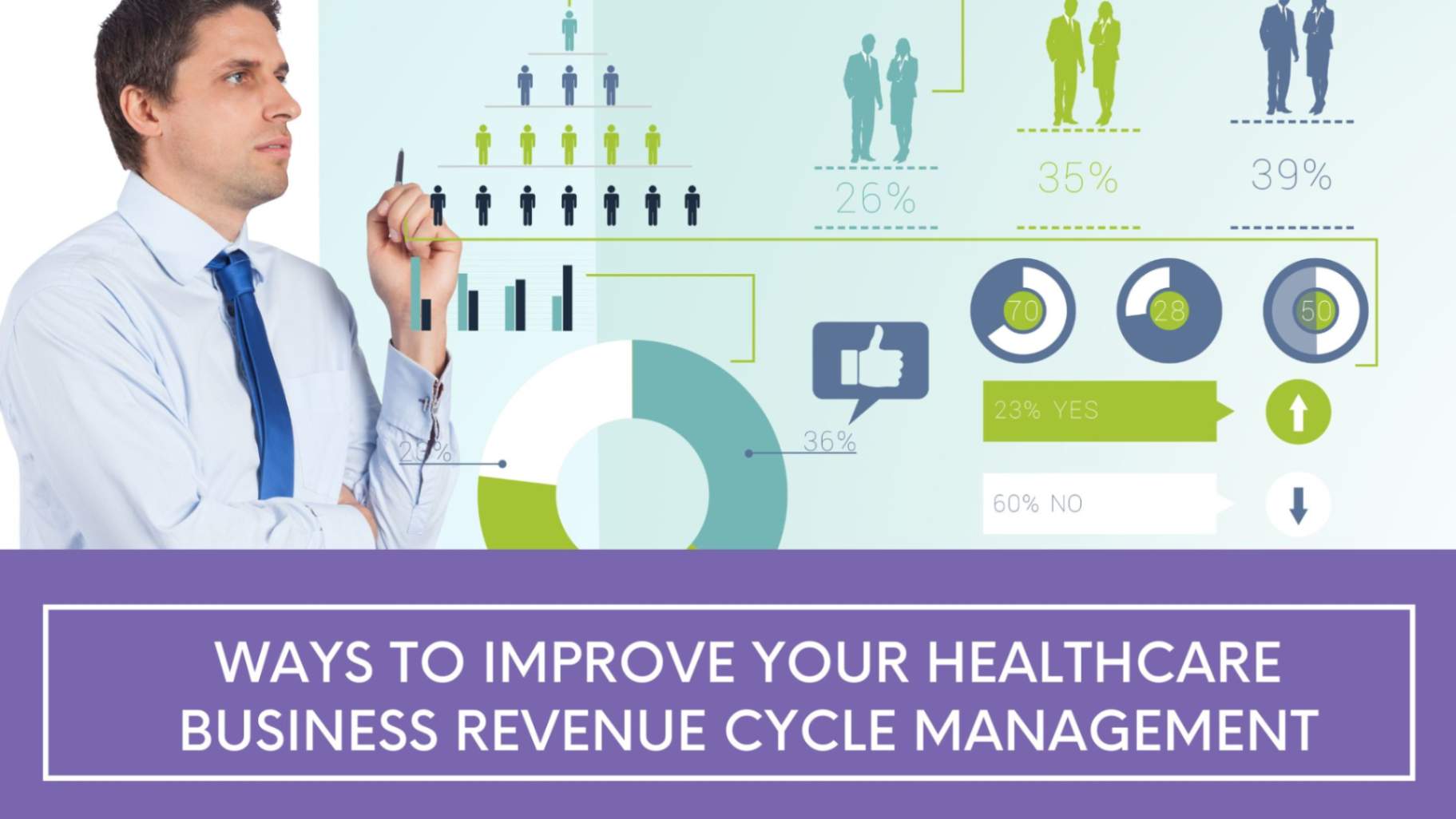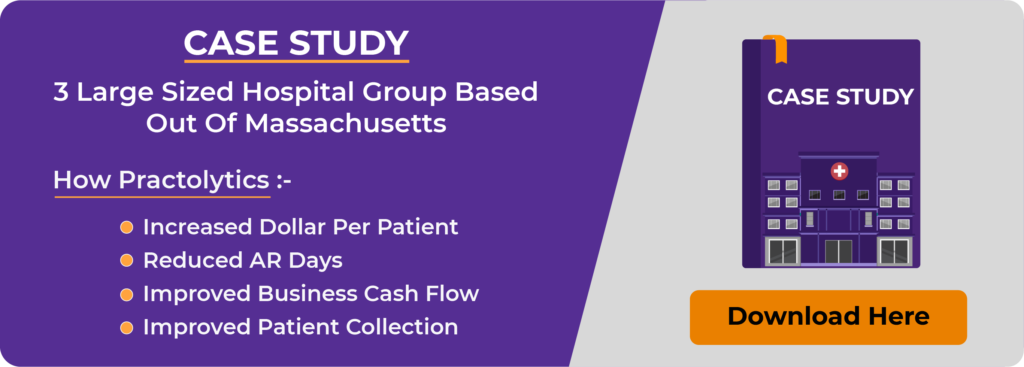Ways to Improve Your Healthcare Business Revenue Cycle Management
The way you manage your revenue cycle speaks volumes about your approach to your business and your chances of being successful in what you do. And, that applies across industries. Universally, the revenue cycle refers to a wheel of balance between income and expenditure for businesses. But when it comes to the healthcare industry, revenue cycle management is an entirely different ball game; it is much more complex and outstretched than in any other industry.
Every healthcare provider is in an endless quest for finding means to improve healthcare revenue cycle management for their practice. Be it small practices at the beginner level or big facilities with multiple departments providing patient care, the core structure of the revenue cycle remains the same. The entire process is driven by the two chief components–the time and efficiency at workflow.
The healthcare revenue cycle is a multifaceted entity with a patient, provider and the insurance company being the three pivots ruling it. Right from patients contacting the facility to enquire about treatment to the collection of the balance amount from the patient after insurance reimbursement, every step of the revenue cycle is decisive on its successful completion. This is why one should constantly be on the lookout for possible pitfalls in the process and keep updating themselves.
Here are some ways practices can improve healthcare revenue cycle management:
Table of Contents
Strengthening Data Capture At The Front Desk
One way to improve healthcare revenue cycle management is by empowering the front desk at your facility in terms of functionality to perform some vital tasks that aid the billing process. This can be attained by educating your staff to do the following:
- Accuracy during patient registration: Be it through a phone call, online booking platforms or at the front desk of your clinic, the details collected from the patient should be complete and error-free. Every detail matters from a billing perspective, including capturing the correct spelling of the first name and last name, current mailing address and other demographics of the patient.
- Eligibility and benefit verifications: Make sure to get the insurance details of the patient double-checked. Look for its validity status, change in packages from the last visit, under whose name the insurance is taken, and location changes. Using this information, one can verify whether the treatment will be covered by the existing plan and educate the patient about their benefits. If the patient is found not eligible for the proposed treatment according to their policy package, the staff can advise on other treatment options and payment methods. Verifying eligibility upfront is one of the core processes Practolytics has inculcated into its client’s process.
- Preauthorization of claims: Front end staff of the clinic can commence their revenue cycle operations by preauthorizing the patient to ensure reimbursement before treatment. This certainly gives a level of surety on getting paid for the quality of care served. The patient can also rest assured about their impending liabilities. It is a win-win for both. Practolytics also ensures, through the practice, that the patient is notified with an advance beneficiary notice if the insurances do not cover the medical expenses.
Also Read – Role of Medical Billing Software in RCM Services
Automating Manually Performed Tasks
Practices can up their game by implementing new-age practice management software to improve healthcare revenue cycle management. Using an integrated software interface to store and manipulate clinical data was a novelty till a few years back. But now, it’s the new normal.
- Automated appointment scheduling and patient reminders: All the work your front desk does regarding communicating with the patient is done better and faster with an automated process. Patients can easily find an appointment of their convenience and enter their details on an online platform. Gone are the days when the patient or your staff had to pen down every piece of information in a printed form, which is highly prone to human errors. Many claims were rejected due to a missing digit in the policy number or an error in the date of visit, but not anymore. Automated patient reminders can also be set to ensure the patient reaches the clinic on the scheduled date and time, which takes away a lot of workload fromhttps://practolytics.com/ebooks/why-is-advancedmd-right-for-you/?utm_source=organic&utm_medium=blog-cta-banner&utm_campaign=clicks your staff. Rescheduling appointments and follow up visits are also better organized this way.
- Card on file technique: One technique found effective among the revenue cycle management best practices is storing the credit card information of the patient in their electronic file at the time of registration. Later on, when there are unpaid patient liabilities after insurance payment, they can be given the option of using this card to complete the payment. This eliminates the need for repeated patient visits for payments.
- Cloud-based data management system: There is the ease of access and integration of front-end to back-end process via the advanced cloud-based documentation system. Every detail entered is accountable, and is easily manipulated to fit other documents such as the billing invoices and claims under the revenue cycle. This avoids repeatedly entering the same data for different documents and saves time.
- Automatic claim generators: Installing billing software makes claim processing easier than ever. It can analyse the diagnostic codes and treatment codes to generate electronic claims. Since the insurance companies are welcoming the electronic submission of claims these days, it makes sense to have claim generator software customized to match the requirements of the payer. With Practolytics’s practice management solutions, you benefit from the implementation of state-of-the-art practice management software that helps you in automating the process for ease and accuracy.
Improved Medical Transcription and Coding Practices
Error-free, detailed electronic health records are the basic necessity to validate your claims regarding the treatment received. No dates, names, authorizations or details of the patient visit should go unrecorded in your transcription process. Similarly, the coding process should also be undertaken by experts who can look at the records and elicit each codable scenario without fail. Every wrong code, missing code or incomplete data mess up the charge capture process and the valuable service provided leaves you with zero payment.
- Educating staff on compliance: The state and the insurance companies keep revising their regulations which makes being compliant to standard regulations a huge pain. As a critical revenue cycle management action plan, arrange for periodic training and update your staff on the latest coding practices.
- Coding and billing audit: Improve healthcare revenue cycle management by conducting scheduled audits at your facility. It can be performed by an auditing team among your staff or hire external auditing services. Analyse all your billing cycles, payment policies and billing process for compliance and loss of revenue. This helps you in detecting frauds, HIPAA-related issues or coding issues before getting into legal risks.
Tracking of Claims and Denial Management
All your revenue cycle strategies should aim at faster reimbursements from insurance companies. One cannot stress enough the importance of generating ‘clean claims’ to improve healthcare revenue cycle management. To generate ‘clean claims’ do the following:
- Clean scrubbing claims before submission: Send the claim to a clearinghouse or get clean scrubbing software to verify the claims on errors and omissions leading to denial. The entire patient, provider, insurance and coding documentation needs scrubbing for the disparity between given details. It makes sure that the details in the health records validate your request for reimbursement and helps you send out a full proof claim for faster approval; one of the ways to improve healthcare revenue cycle management.
- Denial management and appeal process: Even after fine-tuning your claims to perfection, you often see the insurance companies denying or rejecting the payment request. Keep tracking the status of your claim request and be prepared for the appeal process and resubmission of claims. The faster you can change denied claims to approval worthy claims, the better for your account receivables.
Outsourcing RCM Services to Improve Healthcare Revenue Cycle Management
This is the best-proven method to improve your revenue cycle. Leaving the administrative work to professionals spares you from managerial roles and helps you to focus on patient care. Be it pre-authorizations, clinical documentation, coding, bill capture, claim generation or denial management—practice management outsourcing companies can optimize and streamline your workflow to obtain the best results. It is like having a compliance manager in the house to resolve the issues in your data capture.
Outsourcing can bring quality to your process and help your staff fine-tune their process to higher standards. Implementing experienced professionals, the latest technology and other resources to your practice increases profitability. Enjoy the benefits of a faster turnaround time without compromising HIPAA standards and privacy rights.
RCM outsourcing companies such as Practolytics can design the process customized to the needs of your practice in cost-effective packages. They are equipped with advanced practice management software that can work wonders for your practice. One of the highlights at Practolytics is the savvy statistical key performance indicator which can help you look at each step of your practice objectively. With the aid of clearly comprehendible graphs and diagrammatic reports, it is easier to analyse the gaps in the workflow. It can give you valuable tips to improve healthcare revenue cycle management for creating better income.
The above mentioned are a few promising ways to improve healthcare revenue cycle management at your facility. With vast experience in the healthcare industry, Practolytics can help you shorten your revenue cycle to enjoy revenue boost, personal growth and increased clientele for your business and team. Team up with the experts at Practolytics to achieve the harmony between running a successful practice and evolving into the best in your field.
Talk to Medical Billing Expert Today — Get a Free Demo Now!








